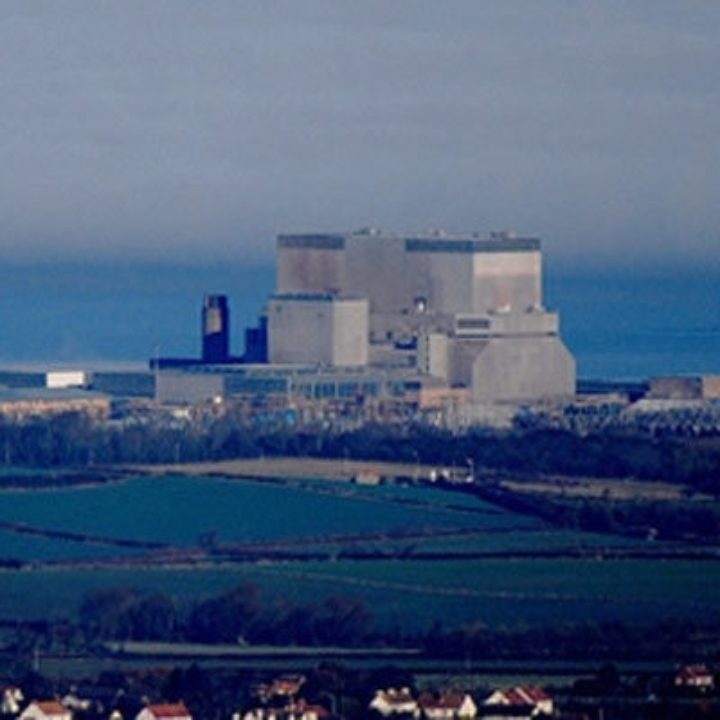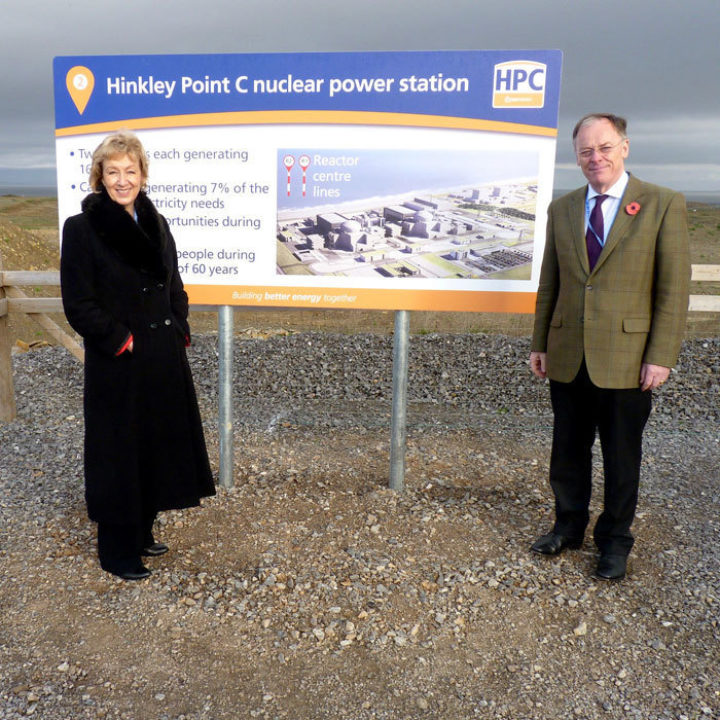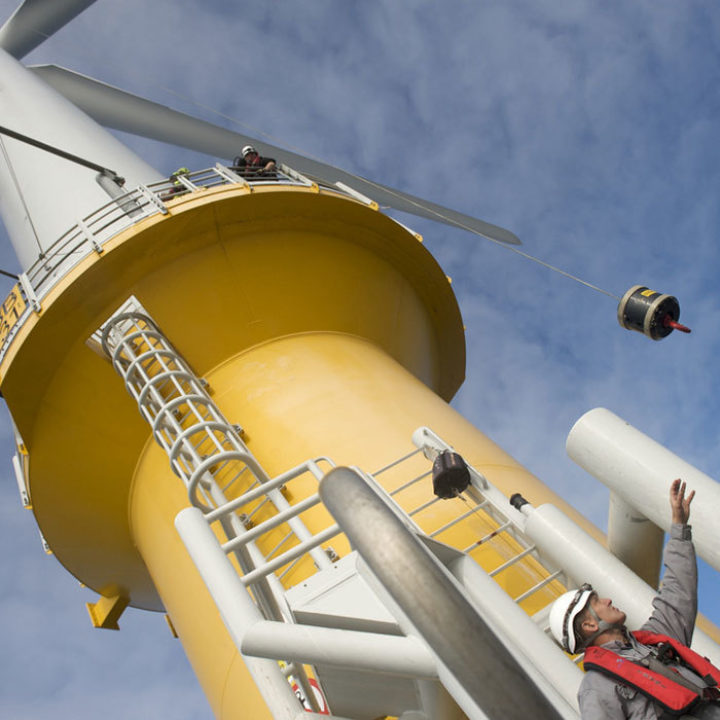Hinkley C: The outstanding questions
As a final decision nears on troubled nuclear project, questions remain on cost, waste and need
By Richard Black
Share
Last updated:

The mood music is lush and optimistic; this time it looks as though French energy giant EDF is set to give a final, definitive assurance that it will indeed build the proposed new nuclear power station at Hinkley Point in Somerset.
If so, it’ll be the first approval for a new UK nuclear power station since Sizewell B came online in 1995. In case you’ve forgotten how long ago that feels, this was the year when Princess Diana spilled the beans on TV about her problematic marriage, John Major challenged restive Conservative MPs to ‘put up or shut up’, and the UK’s most expensive footballer was – er – Stan Collymore.
Here are Hinkley C's vital statistics:
- Two European Pressurised Reactors (EPRs)
- Power output of 3.2 gigawatts (GW) – about 7% of UK peak demand
- Estimated build cost of £18-24.5bn
- UK government loan guarantees of £2bn
- EDF to be paid £92.50 per megawatt-hour (MWh) generated – that’s in 2012 money, and is index-linked. In 2016, that’s just under £102 – about double the current wholesale electricity price
- Total of subsidies paid by UK consumers over the initial 35-year contract period could total £30bn, according to the National Audit Office.
Assuming Thursday’s decision turns out to be in tune with the mood music – and it might not, because we’ve heard the orchestra warm up regularly in the past few years before announcing an interval – what will the Final Investment Decision mean? How final is it? What are the implications if the project stumbles further down the line? And what does the enormous pricetag imply for the UK, for France and for EDF itself?
Here, then, are the outstanding Hinkley questions.
1. How ‘final’ will the Final Investment Decision be?
To adopt a line most famously used about nuclear fusion, not fission, Hinkley C is 10 years away – and has been ever since it was proposed in 2007. Then, EDF boss Vincent de Rivaz promised we’d be cooking our Christmas turkeys on Hinkley C’s juice by 2017. Now, the first electrons aren’t scheduled to flow before 2026.
Between now and then, a host of hurdles have to be jumped if the project is going to deliver:
- The Austrian government has a legal suit pending, arguing that the enormous and prolonged subsidies breach EU State Aid rules.
- EDF may face a separate State Aid case over the extraordinary support it’s receiving from the French government, which owns 85% of the company’s shares
- French unions are mounting yet another legal case due to fears over jobs
- Reactors produced by Areva, the same company set to make those for Hinkley, have been found to contain 'anomalies' and are currently under testing by the French nuclear regulator
- Only last week the French financial authorities raided EDF’s offices over allegations that it had been less than duly transparent over Hinkley’s finances.
That’s quite apart from other issues that could stall the build, such as site protests and legal challenges in Britain, the sheer size of the pricetag, and the fact that no EPRs have been completed yet.
By comparison, the process of building wind farms, tidal turbines or gas-fired units looks like a doddle.
So… what are the chances that it will actually go ahead? And what’s Plan B if it doesn’t?
2. What safeguards is the UK getting from EDF?
From the outside, this is supposed to look like a commercial contract between the UK government and an energy company, EDF. In reality, it’s morphed into a political deal between the French and British governments.

This raises a host of questions about the nature of the final contract that would be signed, in particular about safeguards within it:
Will the contract be public? If not, why not, given that Britons are going to be paying for the power station until nearly 2060? Do we not have a right to know?
The first EPR under construction, at Olkiluoto in Finland, was supposed to open in 2010; the second, at Flamanville in France, was due to cook its first turkeys in 2012. Neither is anything like operational yet. Olkiluoto will cost more than twice as much as forecast, Flamanville nearly three times as much.
Empirical evidence suggests therefore that even with an unprecedented 10-year build time scheduled, Hinkley C may not materialise on time. So… what penalties are built into the contract for late delivery? If costs escalate and EDF/the French government says the £92.50 strike price isn’t enough, what then? Does the UK escape with not a penny spent?
3. Can Britain afford it?
Hinkley C is one of the most expensive structures ever built on the face of the planet, more expensive even than the Pyramids or the Large Hadron Collider.
The UK is £1.7 trillion and rising in debt. In case it escaped ministers’ attention, the UK recently voted to leave the EU. In doing so, the government abandoned plans to balance the national coffers by 2020; and although the plague of financial locusts predicted by leading Remainers hasn’t materialised, quite a few economic indicators are pointing downwards.
If loan guarantees have to be called on, building Hinkley will directly draw on the national coffers. Otherwise, costs will fall on bill-payers; but still, in these uncertain and straitened times, is building Hinkley entirely wise?
4. Do we need it?
The old model of an electricity system wherein big power stations pump out electricity to passive consumers is changing fast.
Within this year alone, the head of National Grid, the industry lobby group EnergyUK and the National Infrastructure Commission have all said that a flexible ‘smart’ grid based on renewables, interconnection, storage, demand response and peaking generators is the logical destination for the UK’s energy transition.
Relative prices are harder to forecast; but costs of renewables and storage are coming down faster than predicted, while demand response cuts bills, and imported electricity is already generally cheaper than that generated here. Wind power isn’t a direct replacement for nuclear, but having cost more than nuclear just a few years ago, Dong Energy has just signed a deal to build an offshore wind farm at £61.10 per MWh – less than two-thirds of the price for Hinkley.
5. What about the waste?
It’s hardly discussed in the Hinkley context, but nuclear waste is not a trivial issue. Before Mr de Rivaz began predicting our culinary Christmas futures, there was a general consensus in the UK that we would not build any more nuclear power stations until we’d established a permanent solution (in other words, a deep geological storage site) for the existing waste.
We haven’t got such a solution. The one place in the country where people were interested in hosting a storage site, West Cumbria, eventually decided not to proceed.
The consensus magically disappeared when Hinkley appeared on the horizon; but for nuclear waste, no magical solution exists.
6. What is the French government really after?
The effort that the French government is putting into securing the Hinkley deal is quite staggering. Like a young married couple struggling to afford their first house, it’s been contemplating selling off the family silver (in this case, shares in airports, car manufacturers and defence companies) in order to raise the cash.

So what’s behind it? And what does that tell us about the deal?
The French nuclear industry is as secretive as the Freemasons but we can discern two factors that the government will surely have in mind – and neither of them is particularly good news for Britain.
Firstly, if the Hinkley EPRs aren’t built, the French nuclear reactor-building industry is effectively dead. Rather than cooking turkeys, Olkiluoto and Flamanville are turkeys; they may eventually take off, but what a rigmarole!
Serving up Hinkley on time and on budget would allow France to claim it’s still a player in the global reactor-building business alongside its Chinese, Russian and American competitors, however inflated the price and timescale. But that makes the UK a guinea-pig.
Secondly, what will the £92.50 per MWhr buy? Looked at one way, nothing less than the rejuvenation of France’s own nuclear fleet. Under Le Grand Carénage (‘The Refit’), France plans to refurbish many of its ageing reactors in order to get about 10-20 years’ additional life out of them. It’s said to be an economic solution – but is still scheduled to cost €100bn.
Regular earnings from across La Manche, courtesy of Mr and Mrs Briton’s energy bills, will not, one suspects, go amiss. Investment bank Jefferies calculated that if Hinkley C had been operating in 2014-5, it would have generated £1.6bn in underlying profits – a third more than the ‘big six’ energy companies’ actual underlying profits combined.
7. How does Hinkley fit with new, pro-industrial strategy Britain?
One thing that Britain did pretty well in former decades was to build an industrial strategy around its nuclear prowess. British scientists designed reactors, British companies built them, British engineers installed them. Repeated use of the same designs raised expertise and kept costs down. In short, a supply chain was developed, which could also have sustained an export market were the Americans not virtually giving their reactors away at the same time.
Britain is now building another supply chain and a skills base – but this time, for offshore wind. The Hull clean energy park is perhaps the best example.
Now that industrial strategies have been rehabilitated by creating a government department responsible for them, how does Hinkley help? There will be jobs, yes – but the bulk of the supply chain is going to be in France, certainly the high-tech bits. At most we’ll build four EPRs, alongside other designs – so, little learning through repetition. And jobs? Well, we’ve just lost 12,000 in the solar business, apparently without murmur.
Those are, perhaps, the biggest seven questions on Hinkley right now, though not the only ones. This week might bring news - but it's unlikely to bring complete answers.
Share